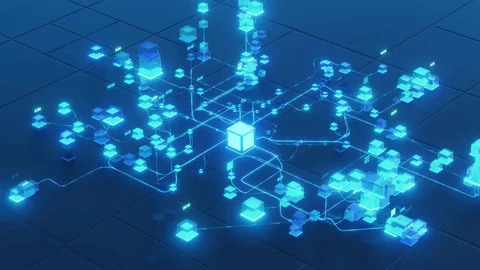What is a Network Node?
Anyone who uses the internet relies on networks, and the networks themselves rely on network nodes. This article endeavors to shed light on what a network node is, its role, the different types, and how these nodes can be discovered.
What is a Network Node?
A network node stands as a fundamental building block in IT infrastructure. It represents any device that participates in communication and data exchange on the network. Every network node operates with its distinct role and contributes uniquely to the ecosystem of the entire network.

What does a node do?
A network node performs several key functions that ensure the smooth operation of a network. These functions include:
- Data transmission – Nodes transmit data across the network. Whether sending an email, streaming a video, or accessing a website, the node plays a critical role in ensuring the data reaches its intended destination.
- Data reception – Just as nodes send data, they also receive it. A node that receives data processes the information and either acts on it or passes it along to another node.
- Data forwarding – In more complex networks, certain nodes (like routers) forward data to the correct destination. This process ensures that information routes efficiently through the network.
- Resource sharing – Nodes share resources such as files, printers, and internet connections. This sharing capability is one of the main reasons networks are so powerful and useful.
Importance of nodes in maintaining a stable network
It is vital for maintaining a stable and efficient network. Their importance lies in several key areas:
- Data routing and communication: nodes manage the flow of data, ensuring information is transmitted to the correct destination within the network.
- Network scalability: nodes allow a network to grow and adapt by adding more devices without compromising performance.
- Fault tolerance: nodes help distribute network tasks, so if one fails, others can compensate, reducing the risk of complete network failure.
- Efficient resource management: nodes optimize resource use, balancing traffic and workload, ensuring smooth operation across the network.
5 types of Network Nodes
There are several types of network nodes, each with distinct characteristics and functions:
- Internet node: It is a point of connection within the vast network that constitutes the Internet. Every device, from personal computers to powerful servers, that is connected to the Internet can be considered an Internet node. These nodes communicate with each other to facilitate the sharing and transfer of data across the Internet.
- Telecommunications node: This type of node is used in telecommunications networks. It functions as a redistribution point or a junction for transferring data. Examples include telephone exchanges or relay stations, which play a crucial role in maintaining seamless communication within a telecom network.
- Data communications node: In data communications, a node is any active, physical, or electronic device attached to a network. It is capable of sending, receiving, or forwarding information over a communications channel. Devices such as routers, switches, and bridges fall under this category.
- Distributed node: These nodes are part of a distributed network where processing power, memory, and data are spread across multiple nodes. Each node works independently and in parallel with others, contributing to the overall performance and reliability of the network.
- Local area networks (LANs) & wide area networks (WANs) nodes: Nodes in LANs and WANs refer to devices like computers, printers, and servers connected within a limited area (LAN) or over a large geographic area (WAN). These nodes help in facilitating communication, sharing resources, and exchanging data within their respective networks.

How to map network nodes
Mapping your network is crucial to determine how your network is performing. This helps pinpoint bottlenecks and network issues. With the help of network performance monitoring tools, you can easily track the performance of your network, scan for nodes, and create network maps. Another method is network mapping which lets you visualize all the devices or nodes connected to your network. It provides the information required to track the network’s overall performance. Network mapping is one of the most effective ways to track your network. Generally, network mapping tools produce three types of maps:
- Physical map: A diagram consisting of all the network elements, including plugs, ports, chords, and more.
- Logical map: A logical map shows the network topology and how the data flows between the nodes.
- Functional map: This addresses the application traffic flow through the network.
Conclusion
In essence, a network node is a vital component in the field of Information Technology. It plays a key role in managing the data traffic in a network. Understanding the various types of nodes and their functions can help individuals and businesses optimize their network infrastructure for improved efficiency and security.